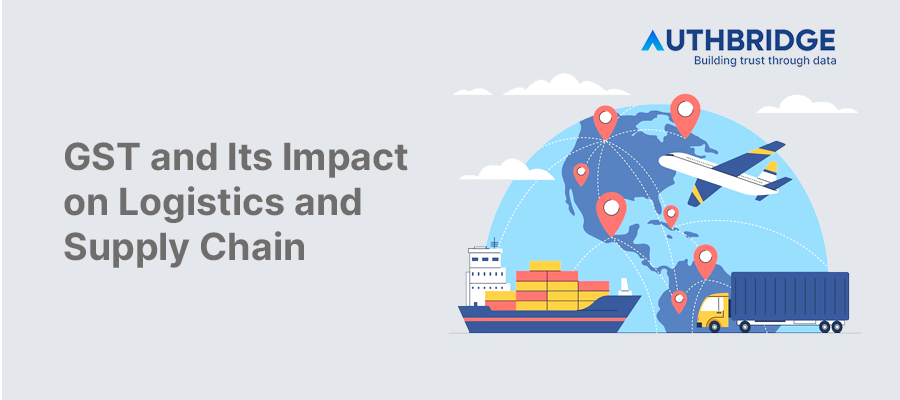Decoding The Impact Of GST On Logistics And Supply Chain Management

Introduction to GST and Its Impact on Supply Chain
Historical Background: The Tax Web Before GST
Before the Goods and Services Tax (GST) was implemented, India's tax structure was a complex maze of various indirect taxes levied by both the state and the central governments. This system not only made tax compliance cumbersome but also led to the cascading effect of taxes, where tax was levied on an already taxed value, increasing the overall cost of goods and services.
Simplification of Tax Structure
GST revolutionized this system by consolidating multiple indirect taxes into a single tax, aiming to make the tax regime simpler and more transparent. This unification has significantly impacted the supply chain and logistics sector, streamlining operations and reducing tax-induced cost burdens.
Operational Efficiencies Post-GST
Centralized Warehousing
Prior to GST, companies often operated multiple warehouses across states to mitigate the impact of state-level taxes. This not only increased operational complexities but also led to higher costs. With the introduction of GST, the need for multiple warehousing to avoid state taxes has been eliminated. Businesses can now opt for centralized warehousing, which enhances operational efficiency and reduces costs associated with managing numerous storage facilities.
Smooth Cross-Border Transactions
GST has significantly simplified the tax structure for interstate transactions, removing the hurdles of state entry taxes and various local taxes. This has led to smoother and faster movement of goods across state borders, positively impacting the supply chain by reducing transit times and improving the delivery schedules.
Cost Implications of GST
Reduction in Operational Costs
The streamlined tax structure under GST, coupled with the shift towards centralized warehousing, has led to a noticeable reduction in operational costs. These savings can potentially be passed on to the consumers in the form of lower prices, making products more competitive in the market.
Transitional Costs
While the long-term benefits of GST are clear, businesses initially faced transitional costs. These include expenses related to updating IT systems for GST compliance, training staff on the new tax regime, and the temporary disruption of business operations during the transition period.
Enhanced Transparency and Compliance
GST Returns Filing Process
GST has introduced a digitized compliance framework that requires businesses to file returns online. This has increased transparency and compliance, as the government now has access to real-time data on transactions. It also allows businesses to better manage their tax liabilities and input tax credit, improving the overall efficiency of the supply chain.
Challenges in Becoming GST Compliant
Adapting to the new GST system posed challenges, especially for small retailers who had to overhaul their existing accounting and IT systems. Despite these initial hurdles, the move towards GST compliance has encouraged a more transparent and efficient tax administration.
Industry-Specific Impacts of GST
- E-commerce Companies: The unified tax system under GST has enabled e-commerce companies to streamline their warehousing and logistics, reducing costs and improving customer service.
- Food and Beverage: GST has facilitated easier nationwide distribution of products, leading to reduced food prices and improved availability of fresh produce.
- Manufacturing: The manufacturing sector has benefited from reduced logistics costs and improved operational efficiencies, enhancing their competitiveness both domestically and globally.
Conclusion
The implementation of GST has had a profound impact on the supply chain and logistics sector, offering both opportunities and challenges. By simplifying the tax structure, GST has not only streamlined operations but also led to cost efficiencies. Despite the initial transition costs, the long-term benefits of GST for businesses, especially small retailers, include improved transparency, compliance, and operational efficiency. With strategic planning and adaptation, businesses can leverage GST to optimize their supply chain and enhance profitability.
Category

Abhinandan Banerjee
(Associate Manager - Marketing)
Abhinandan is a dynamic Product and Content Marketer, boasting over seven years of experience in crafting impactful marketing strategies across diverse environments. Known for his strategic insights, he propels digital growth and boosts brand visibility by transforming complex ideas into compelling content that inspires action.



